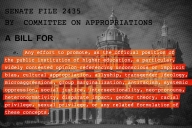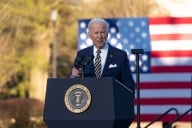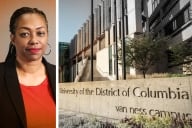You have /5 articles left.
Sign up for a free account or log in.
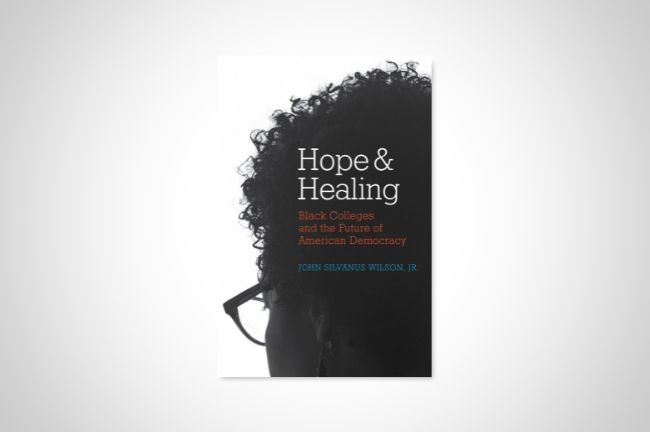
Harvard Education Press
In his recent book, Hope & Healing: Black Colleges and the Future of American Democracy (Harvard Education Press), John Silvanus Wilson Jr., former president of Morehouse College, describes historically Black colleges and universities as a “threatened national treasure,” hampered by underfunding but poised to serve as exemplars for how to produce better, more civically engaged citizens.
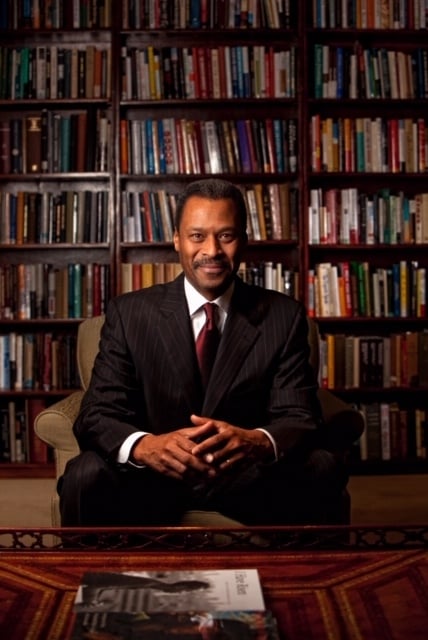
John Silvanus Wilson Jr. is the author of 'Hope and Healing' and former president of Morehouse College.
John Silvanus Wilson Jr.
The book traces the history of HBCUs and the role they played in bolstering Black literacy rates after the Civil War, fostering economic mobility and educating America’s first Black middle class. It also details the obstacles HBCUs faced, including a dearth of philanthropic dollars compared to predominantly white universities. Regardless, the book argues that HBCUs have lessons to teach the rest of higher ed, and with the right long-term funding strategies, vision and support, they could not only thrive but also help shape the moral trajectory of the country.
Wilson now serves as the executive director of the Millennial Leadership Initiative, an American Association of State Colleges and Universities program to diversify the college presidency. He answered questions about the book via email; responses have been edited for length and clarity.
Q: What role do HBCUs currently play in American democracy, and what role do you hope they will play in its future?
A: My book focuses less on the role HBCUs currently play than on the role that the best of the HBCU tradition must be revitalized and publicized to play, forthwith.
As my research evolved, I became discouraged by the degree to which most American campuses have failed to provide an education designed to willfully influence, if not control, the quality of our democracy. Most institutions have been bystanders as American democracy has made an uncertain effort to find its stride. America’s birth defect of human enslavement put an obvious hitch in her first steps. Since then, college life in America has seemed to blissfully ignore the limp of democracy. There is no need to correct something if you do not think it is wrong.
In fact, instead of most campuses tangibly and aggressively influencing and driving American democracy and culture, the opposite has been more common. Forces off campus have typically dictated the norms on campus. For instance, a curriculum that was originally based on a Christian construction of reality was somehow adapted to justify the enslavement and segregation of Africans and the slaughter and isolation of Native Americans. Extending from that consequential and tone-setting foundation, the external socioeconomic influence simply kept morphing and growing.
The obvious alternative to American higher education continuing to do so little about the quality and trajectory of our democracy is for some to pivot and begin leaning into the art of modeling and promoting pluralism and belonging. I believe it is possible for a critical mass of institutions to care about American democracy enough to shift from being passive bystanders to robust upstanders.
Is there a model for what must happen now? Yes.
Enter the HBCU tradition of deliberately and aggressively graduating upstanders inclined to consciously repair our hobbled democracy. My research clarified that HBCUs are America’s only higher education subsector that educated people by commissioning them to assertively mature and harvest our diverse democracy, rather than resist and reverse it. Instead of seeing the nation’s diversity as a nuisance or a noose, they have regarded it as a virtue and a strength. And the landmark legislation of the 1960s is the most tangible result of their efforts.
I believe more of us should consider the transformational, HBCU-driven civil rights movement and ask, “Why was such a movement not launched before the dawn of Reconstruction, or at its sunset? And why wasn’t it led by the students and alumni of predominantly white institutions [PWIs], as encouraged by their professors and presidents?”
American democracy has never been fully actualized, nor is it self-actualizing. As each institution grapples with its own past, the leaders might also explore what can be done now to prioritize campus activities and outcomes that are more relevant to both the fate of American democracy and the fate of the planet … because a broken democracy cannot heal a broken planet.
Q: In the book’s introduction, you quote Mordecai Wyatt Johnson, the first African American president of Howard University, who said that African Americans “must do a contradictory thing.” They “must insist that the doors of Harvard and Yale be kept open to Negroes and at the same time build up Howard and Lincoln as if there were no Harvard and Yale.” Where do you think the country stands today in working toward those two missions?
A: When he offered that dual mandate, over 95 percent of African American [college students] were being educated on Black college campuses. Nearly a century later, only 7 or 8 percent of African Americans are being educated on HBCU campuses. So, the access mission has been accomplished, and the recent Supreme Court decision on affirmative action will not measurably reverse it.
But the mission to strengthen HBCUs yields a very different story. Based on several critical measures, especially endowments and fundraising, the gap between the Black and white sectors has widened dramatically. There is significant work to do.
Yet, it is really important to understand why Johnson referred to that duality as “a contradictory thing.” In the eyes of many Americans then and since, if PWIs ever meaningfully opened their doors, then HBCUs would automatically lose their raison d’être.
But Johnson knew better. He had attended both Morehouse College and Harvard University, each among the best of the two worlds he referenced. Yet he was not so impressed by Harvard that he felt Black colleges should hold it up as a singular model. Like Du Bois, who had attended Fisk University as an undergraduate before entering Harvard, Johnson saw Harvard’s profound flaws and blind spots.
This recognition is akin to what Harvard alumnus Bill Gates referred to in his 2007 Harvard commencement address when he lamented, “I left Harvard [in 1975] with no real awareness of the awful inequities in the world and the appalling disparities of health, and wealth, and opportunity that condemn millions of people to lives of despair.” Du Bois, Johnson and Gates could see that Harvard was not prioritizing democracy, but aristocracy.
Johnson remained confident that HBCUs could be competitively strengthened. He thought HBCU investment worthiness would be revealed not in their prowess at mimicking Harvard and Yale, but in finding their own unique voices.
Q: The book emphasizes HBCUs’ focus on “character optimization” and “capital optimization,” framed through the works of thinkers W. E. B. Du Bois and Booker T. Washington. What do those terms mean to you, and how do you think these two goals serve one another?
A: I ended up referring to that dual optimization as the Holy Grail of higher education, worldwide. Why? Think about it. Capital optimization means having the resource base to secure a sustainably world-class educational environment. Character optimization means having the vision, philosophy, determination and design to consistently produce purposefully engaged, world-class graduates.
I think the content of any sensible institutional strategic plan or campaign case statement will distill to those two things. They are what every campus should aggressively pursue. In one way or another, they should be the primary agenda of every board and president. And progress in each area should be the measure of success for every presidential tenure.
Unfortunately, most presidents and presidencies engage in a lopsided quest for capital. And their boards insist on it. As a result, American higher education is overrun with presidents who have a contractor mind-set.
We need far more presidents to draw on their architectural instincts and sensibilities. Contractors are wired to optimize capital. Architects have the wisdom to optimize both campus capital and character. The selection committee for every presidential search should ask each candidate to clarify “how might you lead us in an effort to re-architect the character of our current undergraduate experience and outcomes, thereby helping to make our graduates more consequential than ever before. What architectural instincts are actively informing your leadership mind-set, skill set and tool set?”
Q: I’ve previously written stories about how hard some HBCU presidents are striving for R-1 status for their institutions. How do you think that push fits into the story your book is telling about the future of HBCUs?
A: Reaching R-1 status is a quantitative measure of robust research capacity and activity. It is decidedly on the capital-optimization side of the ledger. There are currently 146 universities at that level, and it is noteworthy that several HBCUs are closing in on that status. But, to me, their arrival is less important than the actual connection between their research agenda and the most difficult challenges facing humanity.
In my view, the qualitative dimension matters most. It will be consistent with the best of the HBCU tradition for those HBCUs arriving at that status to have meaningfully relevant research agendas that are more worthy of attention than the fact of their arrival. If the substance of their research portfolio makes them unique “R-1 forces for good,” then we should certainly celebrate that. But if their portfolio is largely indistinguishable from the garish blur of other R-1 institutions, then I say, “So what!”
Q: You mention in the book how philanthropy to HBCUs swelled after the killing of George Floyd, but you also call on members of the philanthropic community to shift how they think about HBCUs as an investment. How do you think philanthropy toward HBCUs needs to change, and what returns on investment should donors expect?
A: America’s philanthropic community has always had a disappointingly narrow view of what constitutes investment worthiness in higher education. That explains why the racial gaps in institutional stability in higher education have widened, especially in the last 30 years. But a look way back reveals one noteworthy exception.
I closely examined Andrew Carnegie because he was uniquely motivated to break the philanthropic mold of his time and make a transformational investment in an HBCU campus in 1903. His $600,000 award to Tuskegee was the equivalent of a single, GDP-relative gift in excess of $600 million today.
I wondered why he did that. To be sure, there were multiple George Floyds back then, since lynching was still “the weather” in 1903. But it is reasonably clear that Carnegie felt motivated to invest because he was inspired by a vision of America set forth by Booker T. Washington in Madison Square Garden in April of that year to an audience of some of the wealthiest Americans of his time. Washington offered a theory of progress, which centralized ignorance as the enemy of both races and of any bright future they might jointly experience. He made the case for educating African Americans, rather than continuing to deny and stunt their humanity. In other words, he argued that America could either seek to erase, muffle and constrain its diversity or enrich and harvest it. His quest to harvest it meant preparing his graduates to be distinctive American citizens.
While Carnegie’s reasons for giving were complicated, his award letter made it clear that he was inspired by Washington’s vision of uplift through education, and his grant still stands today as the largest, GDP-relative investment in a single HBCU by an American philanthropist.
Similar to MacKenzie Scott’s more recent munificence, the Carnegie investment provides a rare lesson. Some philanthropists look back or around and decide to donate to HBCUs as a symbolic way to correct something bad. Others come from a different, Carnegie-like mind-set—they look ahead with a vision of a brighter future, and they decide to invest in an HBCU as a tangible way to create something good. Both mind-sets are net positive, but the latter mind-set is both rare and preferred.
Q: Much of this book is advice to leaders about how to approach their work with a growth mind-set, and you also call for more “iceberg trustees”—boards focused on foreseeing and addressing any upcoming obstacles to campus missions. How do you think your experiences as the former president of Morehouse College informed your writing?
A: By the time I arrived at Morehouse College to preside in 2013, most of the concepts in the book were alive and well inside of me. Of note, I had launched my career by spending 16 years in advancement at MIT, at the birth of the billion-dollar capital campaign era. So, at Morehouse, I felt challenged to converge a world-class leadership team to help bring it all to life. We established a great trajectory. We were poised to optimize both capital and character, and we were confident about realizing that vision.
More than anything else, the Morehouse experience taught us that governance is the most important force in the higher education ecosystem. But many of the points I make in the chapter entitled “The Iceberg Trustees” draw on what I have learned throughout my entire career.
The iceberg analogy refers to the sinking of the Titanic, a British luxury liner on its maiden voyage from England to New York back in 1912. Even today, most people do not know that the tragedy was worsened because of governance—a terribly misguided regulatory board focused on having enough deck chairs, at the sacrifice of the required number of lifeboats. Their wayward focus led to the loss of 1,500 lives.
Emerging from that tragedy is an instructive contrast between “deck chair” and “iceberg” trusteeship.
But poor governance is certainly not “an HBCU thing.” For instance, the overreach by the governors in states like Florida and Texas is classic deck-chair trusteeship. Nearly all boards have deck-chair trustees who tend to focus on and involve themselves in matters that are squarely within the purview of campus-based leadership and management. But many boards also have iceberg trustees, who focus their attention and agenda on steering the institution around future threats and difficulties, while converging for the leadership team the golden opportunities required to excel. The quest to optimize each campus requires “iceberg trustees” who tend to use a telescope far more often than a microscope.
Unfortunately, few boards are self-aware enough to be self-corrective, nor are their most vital responsibilities self-executing. And because the deck-chair mind-set can be a silent killer, every board should immediately do an assessment to ensure that its current board membership and culture are dominated by iceberg rather than deck-chair trustees and trusteeship. There is a life-or-death difference between the two.

